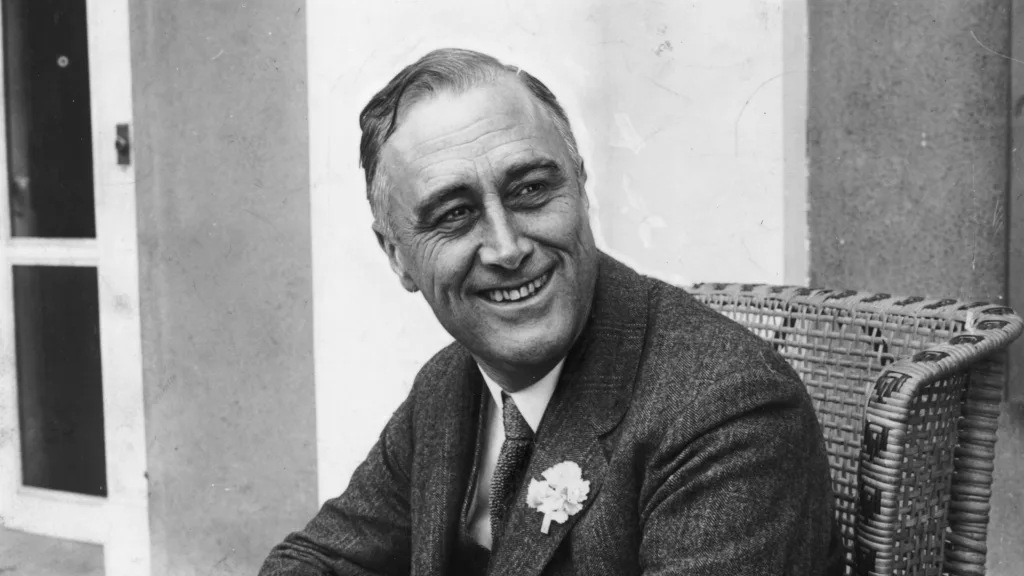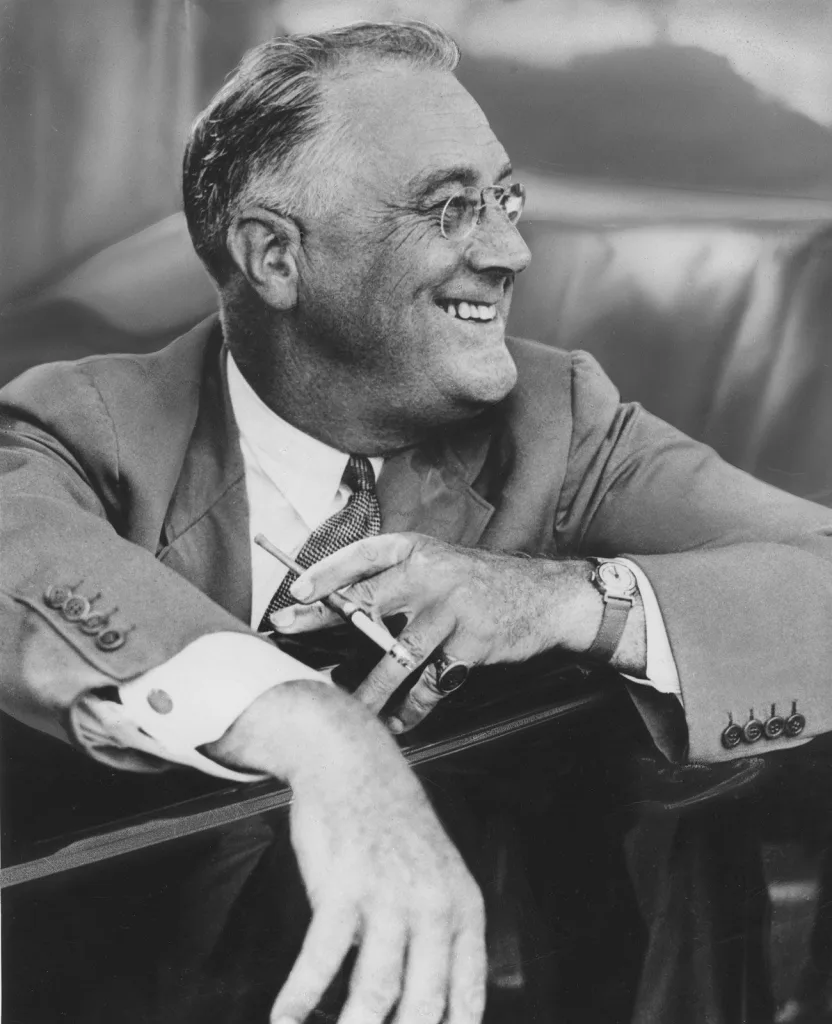Franklin Delano Roosevelt’s unprecedented four terms as President of the United States has been a subject of much interest and debate. The question of why he served four terms can be explored through various factors and historical context.
One significant factor that led to FDR serving four terms was the tumultuous times in which he governed. FDR took office in 1933 during the height of the Great Depression, a time of extreme economic crisis. His New Deal policies aimed to alleviate the suffering of millions of Americans and revive the economy. By the time his first term ended in 1937, although progress had been made, the country was still facing significant challenges. Many believed that FDR’s leadership was necessary to continue the recovery process and bring stability to the nation.
Another factor that contributed to FDR’s four terms was his strong leadership and popularity among the American people. Despite facing criticism and opposition, FDR had a remarkable ability to connect with the public and instill confidence. His fireside chats, radio addresses in which he spoke directly to the American people, helped foster a sense of unity and reassurance during difficult times. This popularity translated into electoral success, as FDR won by significant margins in the 1936, 1940, and 1944 elections.
Furthermore, FDR’s international leadership during World War II played a crucial role in his extended presidency. As the world was engulfed in conflict, many believed that continuity in leadership was essential. FDR’s experience and diplomatic skills made him a respected figure on the global stage. His steady hand and vision for a post-war world made him the preferred choice for many Americans who wanted to ensure stability and a successful conclusion to the war effort.
It is also important to note that during FDR’s time, there were no legal restrictions on the number of terms a president could serve. The two-term limit was an unwritten tradition set by George Washington, which had been followed by all presidents until FDR. This absence of a legal barrier allowed FDR to run for a third and fourth term without facing any legal obstacles.
However, FDR’s four-term presidency raised concerns about the potential for unlimited presidential terms. Many believed that such long tenures could lead to an imbalance of power and undermine the principles of democracy. As a result, the Twenty-second Amendment to the United States Constitution was ratified in 1951, limiting future presidents to two elected terms.
Franklin Delano Roosevelt’s four terms as President of the United States were a result of various factors, including the challenging times he led the country through, his strong leadership and popularity, his international presence during World War II, and the absence of legal restrictions on presidential terms. While his extended presidency raised concerns about unlimited terms, it also led to the establishment of term limits to ensure the democratic principles of the United States.
Did Roosevelt Serve 4 Terms?
Franklin Delano Roosevelt indeed served four terms as the President of the United States. He was elected to his first term in 1932, during a time of the Great Depression, and was subsequently re-elected in 1936 and 1940. Roosevelt’s fourth term began in 1944, making him the only president in American history to serve more than two terms. This historical achievement sets him apart from all other presidents who have held office.

How Many Terms Did FDR Serve And Why?
Franklin D. Roosevelt (FDR) served as the President of the United States for an unprecedented four terms. He was elected for his first term in 1932 and then re-elected in 1936, 1940, and 1944. FDR’s long tenure as President was primarily due to the unique circumstances of the time, namely the Great Depression and World War II.
1. FDR’s first term (1932-1936): FDR took office during the height of the Great Depression, a severe economic crisis that began in 1929. He implemented various policies and programs collectively known as the New Deal, aimed at providing relief, recovery, and reform to the American people. FDR’s efforts to address the economic crisis resonated with the public, and he won re-election in 1936.
2. FDR’s second term (1936-1940): During his second term, FDR continued to implement New Deal policies, focusing on infrastructure development, job creation, and social welfare programs. He also introduced several legislative measures such as the Social Security Act and the Fair Labor Standards Act. FDR’s commitment to addressing the economic challenges of the time contributed to his popularity, leading to his re-election in 1940.
3. FDR’s third term (1940-1944): The outbreak of World War II in Europe in 1939 presented new challenges for the United States. FDR, with his experience and leadership, was seen as the best candidate to guide the country through the war. Although there was a long-standing tradition of presidents serving only two terms, FDR decided to run for a third term, breaking with this tradition. He argued that his leadership was crucial during the war, and the American people agreed, leading to his re-election in 1940.
4. FDR’s fourth term (1944-1945): As the war progressed, FDR’s experience and international standing made him the preferred choice to lead the nation during this critical period. Despite concerns about his health, FDR decided to run for a fourth term in 1944 and won the election. However, his fourth term was cut short by his untimely death on April 12, 1945.
FDR’s four terms as President were a result of the extraordinary circumstances of the Great Depression and World War II. His leadership and policies resonated with the American people, who believed he was the best person to guide the nation through these challenging times. However, his lengthy tenure prompted concerns about the concentration of power and the need for term limits, leading to the ratification of the Twenty-second Amendment in 1951, which limited future presidents to two elected terms.
Did Any Presidents Serve 4 Terms?
Franklin D. Roosevelt is the only president in United States history who served four terms. He was elected to the presidency in 1932 and went on to win re-election in 1936, 1940, and 1944. This makes him the only president to serve more than two terms in office.
Roosevelt’s unprecedented four-term presidency was a result of the unique circumstances during the time. He first assumed office during the Great Depression, a period of severe economic downturn, and his policies and leadership were credited with helping the country recover. Additionally, World War II began during his presidency, and many Americans believed that continuity in leadership was necessary during this critical time.
However, concerns about a president serving unlimited terms arose due to Roosevelt’s extended time in office. Prior to him, the tradition had been that presidents served a maximum of two terms, as established by George Washington. The fear was that a president serving multiple terms could become too powerful and potentially undermine democratic principles.
To address these concerns, the 22nd Amendment to the United States Constitution was ratified in 1951. This amendment officially limited presidents to serving a maximum of two terms or a total of ten years if they had assumed office due to the death or resignation of the previous president.
Franklin D. Roosevelt is the only president to have served four terms, and his presidency led to the establishment of term limits for future presidents to prevent unlimited terms.
Did Roosevelt Serve 3 Or 4 Terms?
Franklin Delano Roosevelt, the 32nd president of the United States, served a total of four terms in office. He was first elected in 1932 and took office in 1933. In 1940, Roosevelt was nominated for an unprecedented third term and subsequently won the presidential election. He was re-elected for a fourth term in 1944. Roosevelt remains the only president in American history to serve more than two terms.

Conclusion
Franklin Delano Roosevelt’s unprecedented four terms as President of the United States were driven by a combination of unique circumstances and his exceptional leadership skills. FDR’s extended presidency can be attributed to several key factors.
Firstly, the Great Depression, which began in 1929, had a profound impact on the American people, and FDR’s New Deal policies offered hope and relief during this tumultuous time. His ability to implement social and economic reforms, such as the creation of jobs, social security, and financial regulations, made him a popular and trusted figure among the American public.
Secondly, FDR’s strong leadership during World War II further solidified his position as a capable and experienced president. His calm and steady guidance, along with his ability to rally the nation and mobilize resources, were essential in navigating the challenges of the war. The American people recognized his competence and believed that his leadership was crucial for the country’s success in this global conflict.
Furthermore, FDR’s effective communication skills played a significant role in his electoral victories. He had a charismatic personality and a unique ability to connect with people on a personal level. Through his famous fireside chats, FDR reassured and informed the American public, creating a sense of trust and confidence in his leadership.
It is important to note that FDR’s four-term presidency also raised concerns about the potential for unlimited executive power. This led to the ratification of the Twenty-second Amendment in 1951, which limited future presidents to two elected terms.
FDR’s four terms in office were a result of the extraordinary circumstances of the Great Depression and World War II, his successful implementation of the New Deal, his leadership during the war, and his effective communication skills. His presidency left a lasting impact on the United States and prompted changes to the Constitution to ensure that no future president could serve more than two terms.
